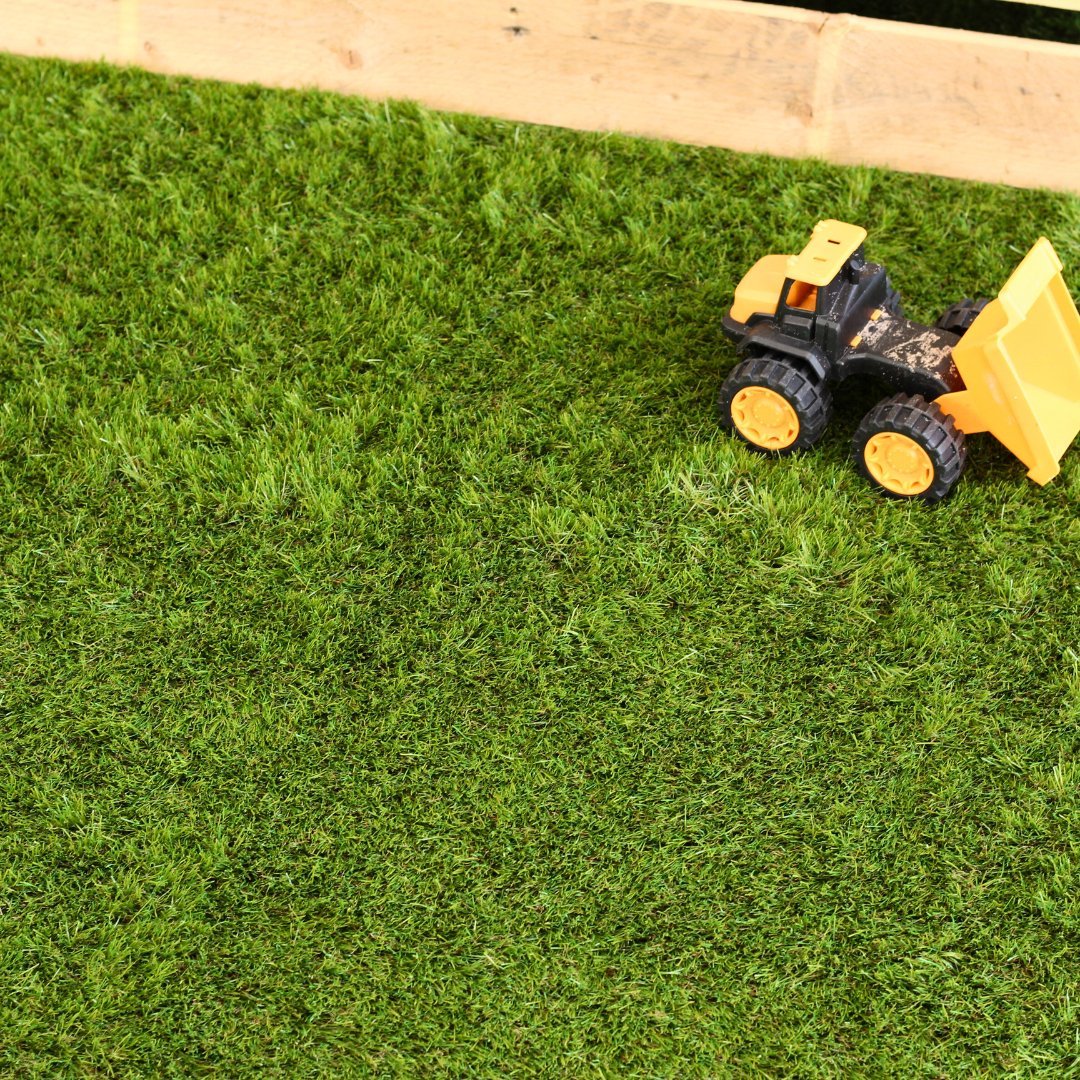
Fake grass has its benefits – like staying green all year round without needing to bring out the hosepipe. But is artificial grass eco-friendly?
In this article, we’ll explore the environmental impact of artificial grass, is it sustainable, and how to create eco-friendly artificial grass for your garden.
Is There Environmentally Friendly Fake Grass?
You can get eco-friendly artificial grass with no toxins, making it safe for children and animals to use regularly. Fake grass can be made from sustainable materials, like sugar cane or plant-based backings. However, these cost more and are not as durable or long-lasting compared to artificial turf made from UV-resistant PP cloth.
Our artificial turf (like our Camden artificial grass) is non-toxic, pet-friendly, and made from durable materials to bring year-long greenery to your garden.
Is Fake Grass Sustainable?
Fake grass is made from synthetic materials, which means its production has an environmental impact. It also doesn’t hold water (as it quickly drains away) and is mud-free, which can lead to fewer insects living in your garden.
Yet there are some benefits to artificial grass in terms of its sustainability, including how it:
-
Requires no watering (saving water)
-
Doesn’t need mowing (saving electricity/petrol produced by a lawnmower)
-
Never requires fertilisation (which can cause water pollution in waterways)
-
Is non-toxic (making it safe for children and pets)
Artificial Grass vs Natural Grass: Which is Best?
Choosing between artificial grass vs natural grass for your home requires careful consideration. Which is best for your home depends on your priorities (e.g. do you value sustainable materials vs longevity, or more insects vs less maintenance).
The key points to remember about natural grass are that it:
-
Contains mud
-
Attracts insects
-
Requires watering (in hot weather, grass can singe without frequent watering)
-
Needs fertilising (which keeps natural grass looking green)
-
Retains water (which can help prevent neighbourhood flooding)
The main aspects to remember about artificial turf include:
-
No mud (making it cleaner for kids and pets)
-
Easy to clean (particularly when cleaning pet mess)
-
Stays green year-round (no fertilisation required)
-
Drains quickly (doesn’t flood with proper installation)
How to Make a Garden With Artificial Grass Eco-Friendly

Fake grass may not be as good for the environment compared to real grass, but it still may be the best solution for you. The benefits of artificial turf can outweigh the negatives (e.g., no mud, no mowing, no watering, ease of cleaning, etc.).
If you’re eco-conscious but want or need artificial turf for your home, there are ways to make your garden more eco-friendly with artificial grass. For example, you can:
-
Plant native flowers in surrounding flower beds
-
Create a small ‘wilded’ area (where natural flowers are left to thrive)
-
Add bug houses as garden ornaments
-
Compost food waste and use the soil for flowerbeds
-
Fit bird feeders to allow native birds to visit your garden
-
Install a water butt (and use it to clean your artificial grass)
Find Your Artificial Turf Today
Artificial turf comes in all shapes and sizes – from green artificial grass that’s non-toxic to luxury ranges that look like natural grass.
If fake grass is the right choice for your home and family life, explore our collection of artificial turf today.
We recommend Camden artificial grass to make your home safe for pets, or our Castle artificial turf for the most natural-looking artificial grass.




